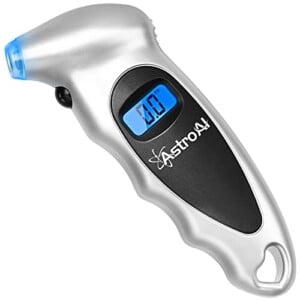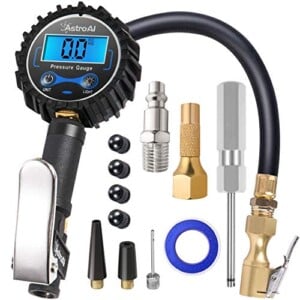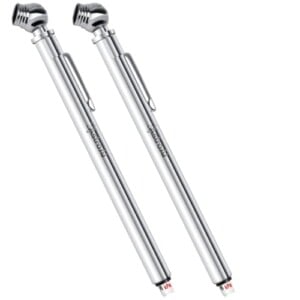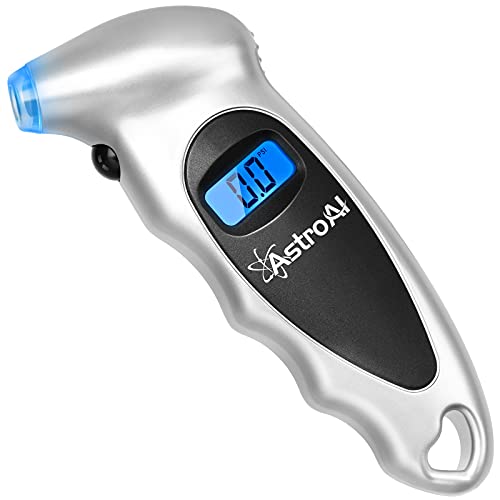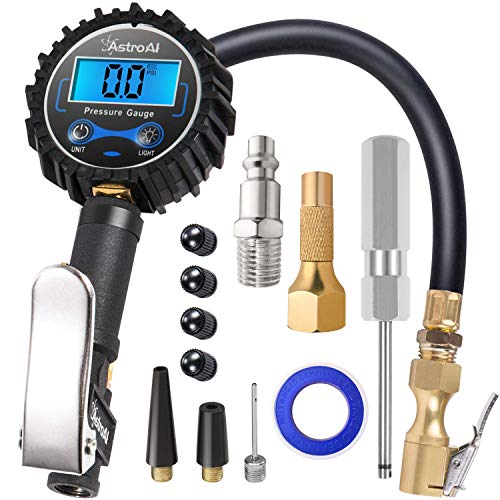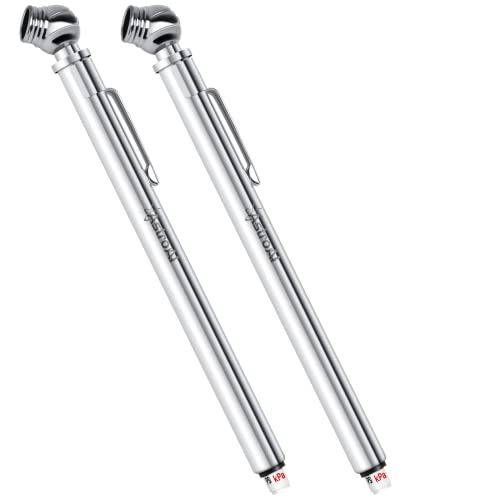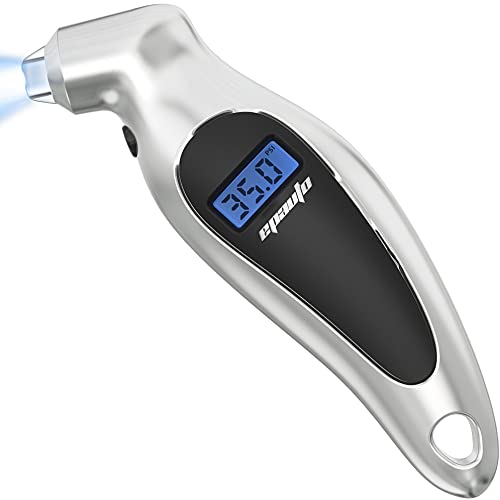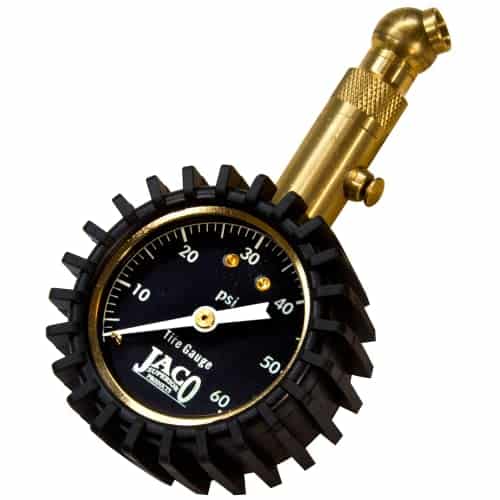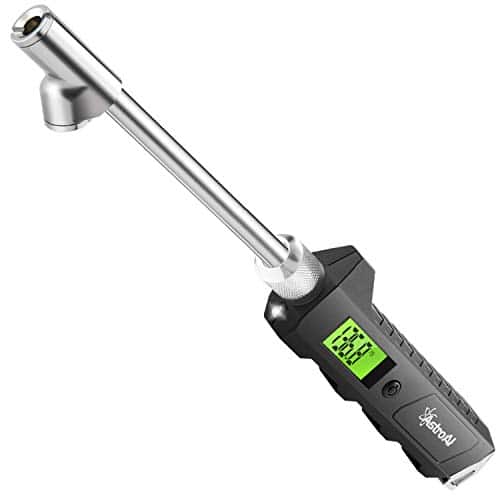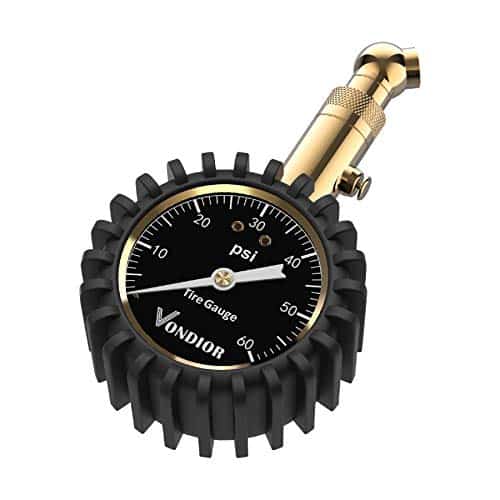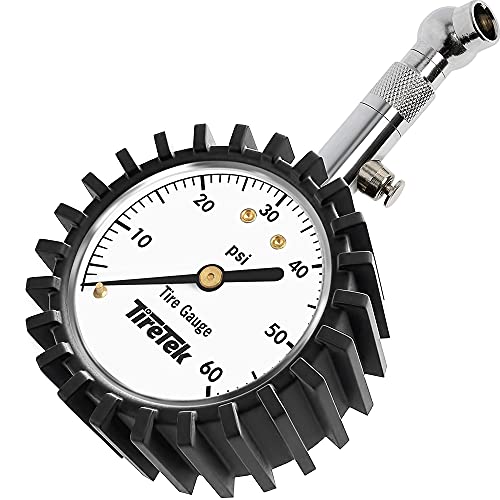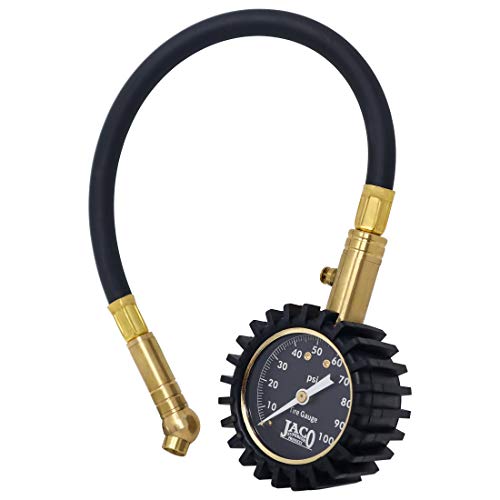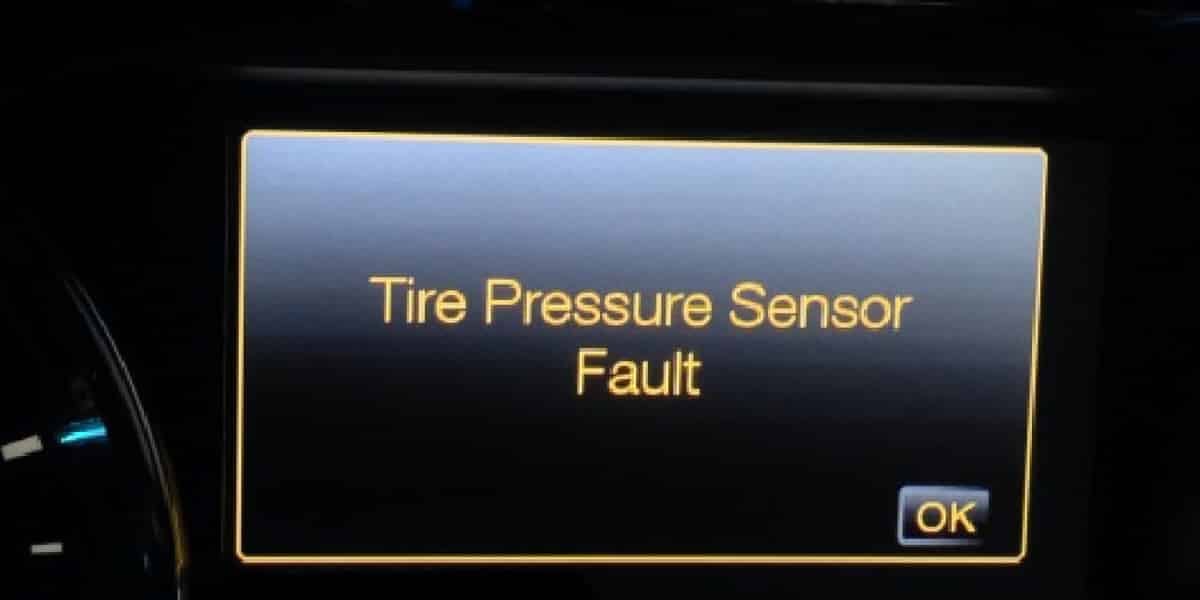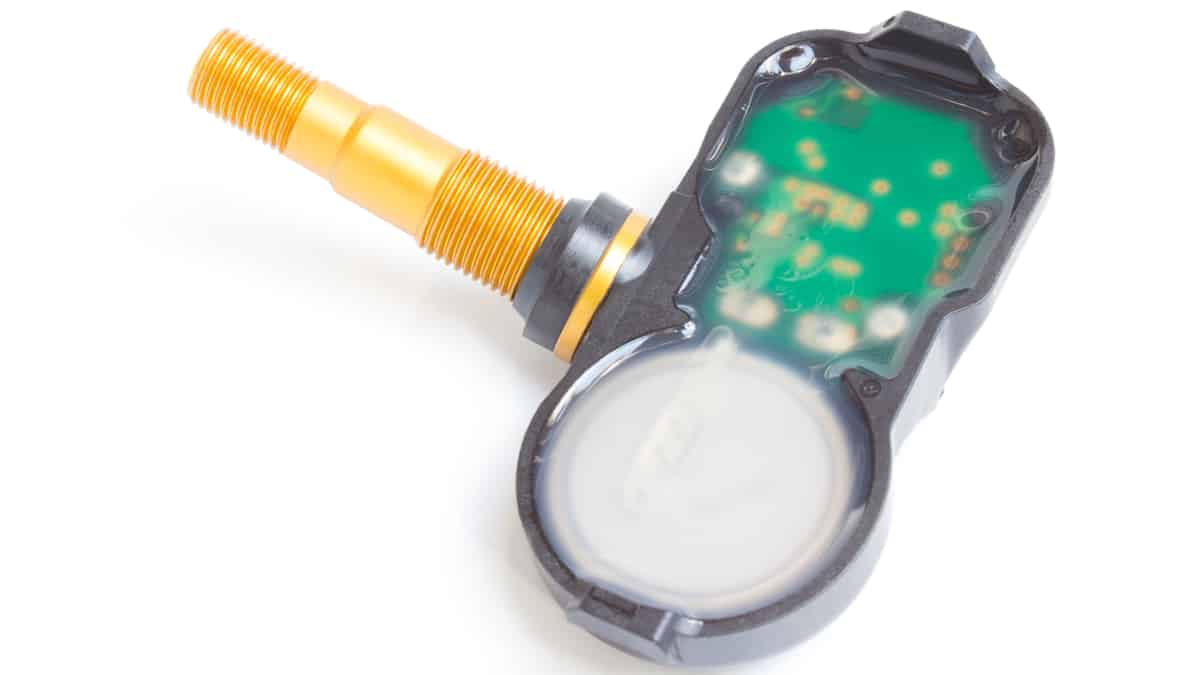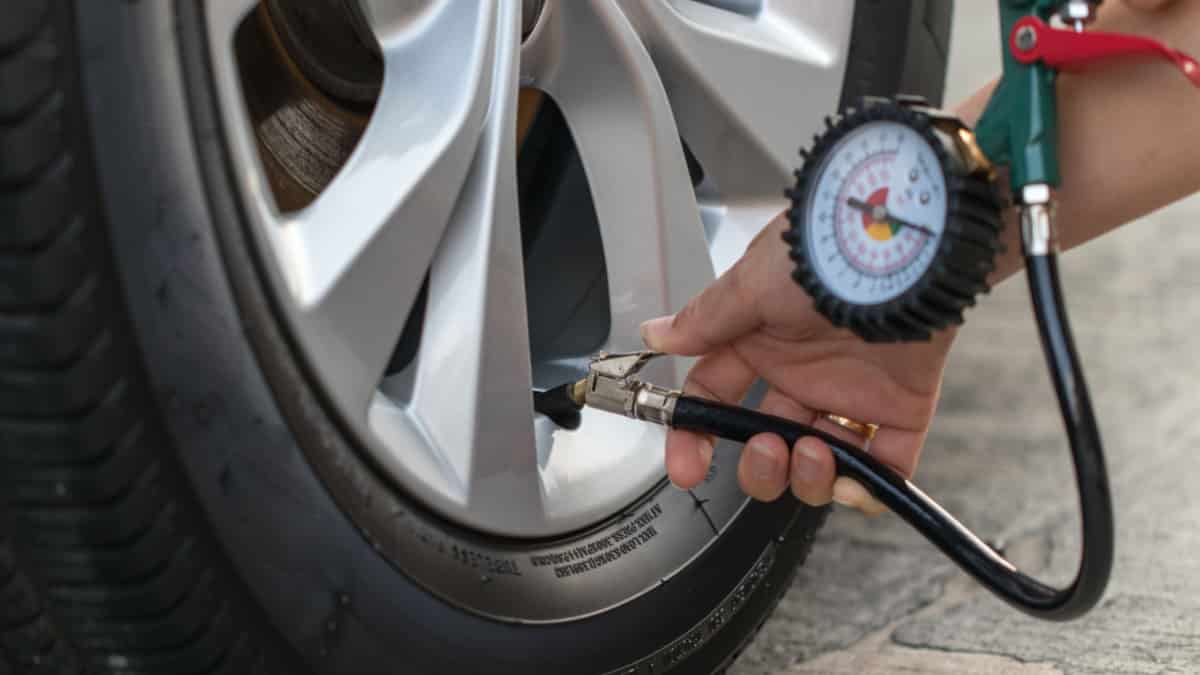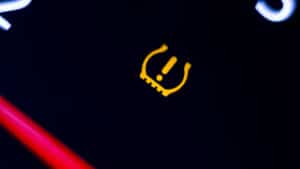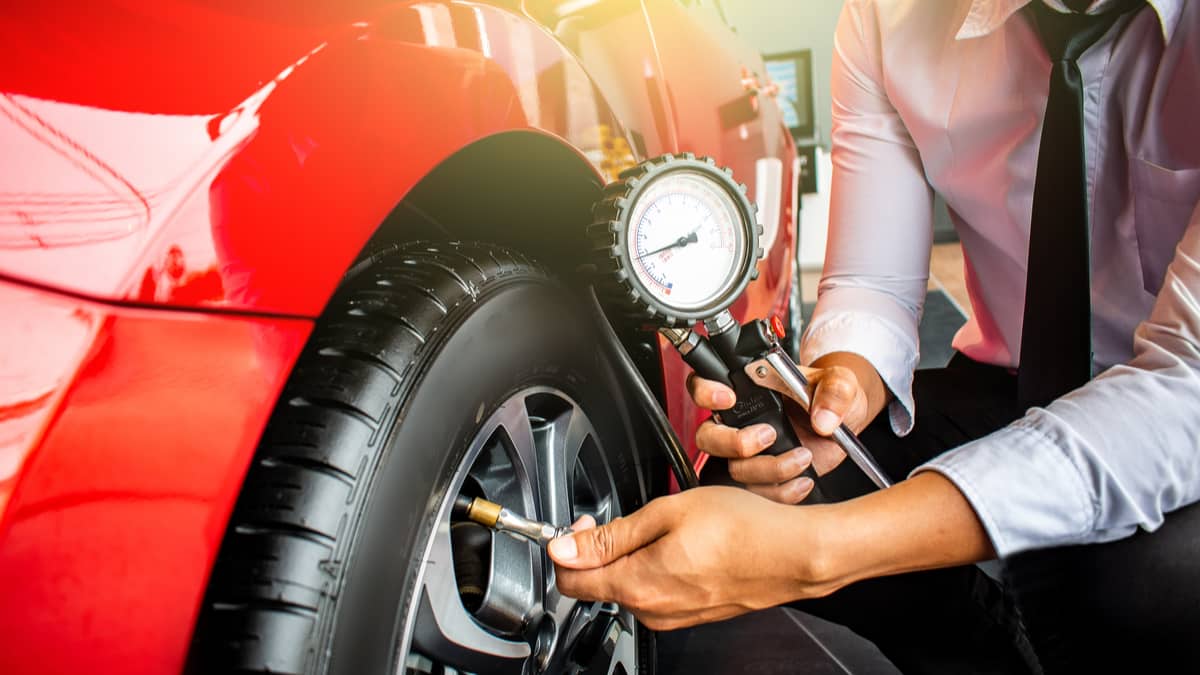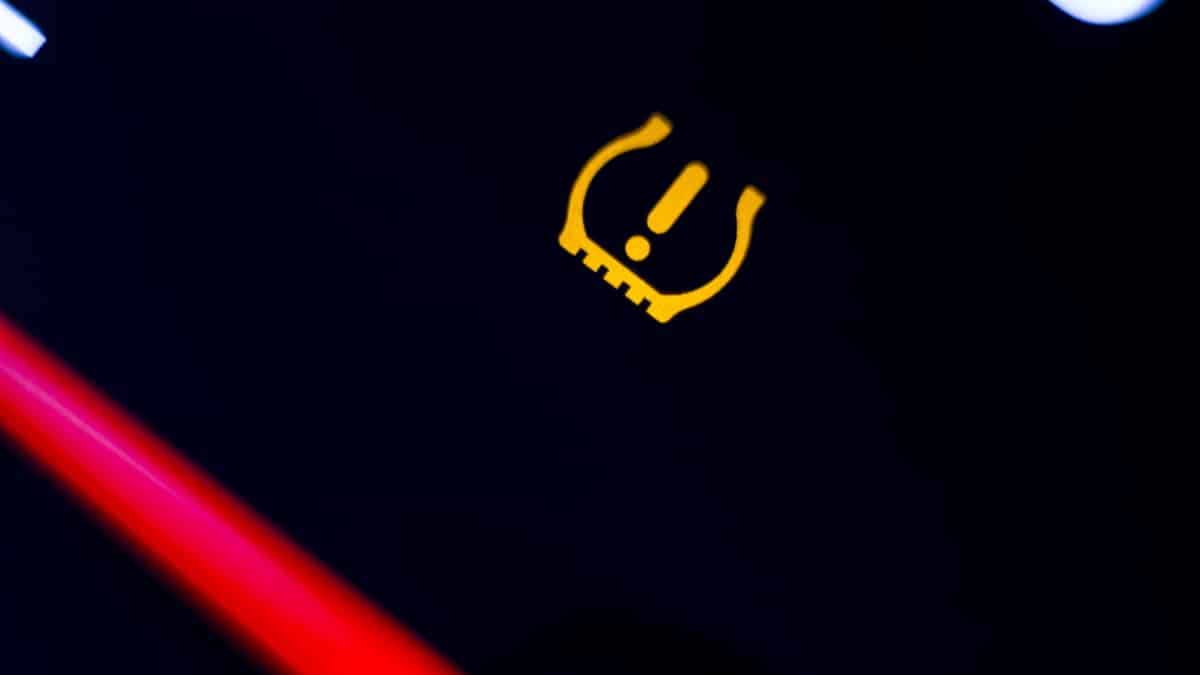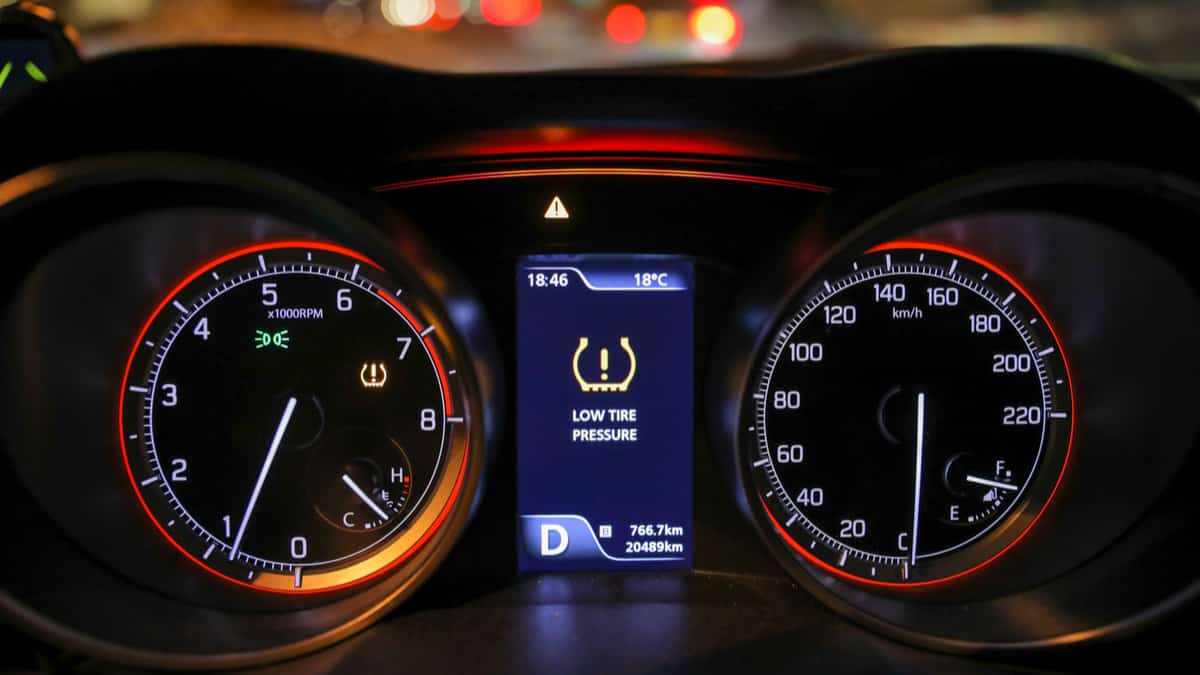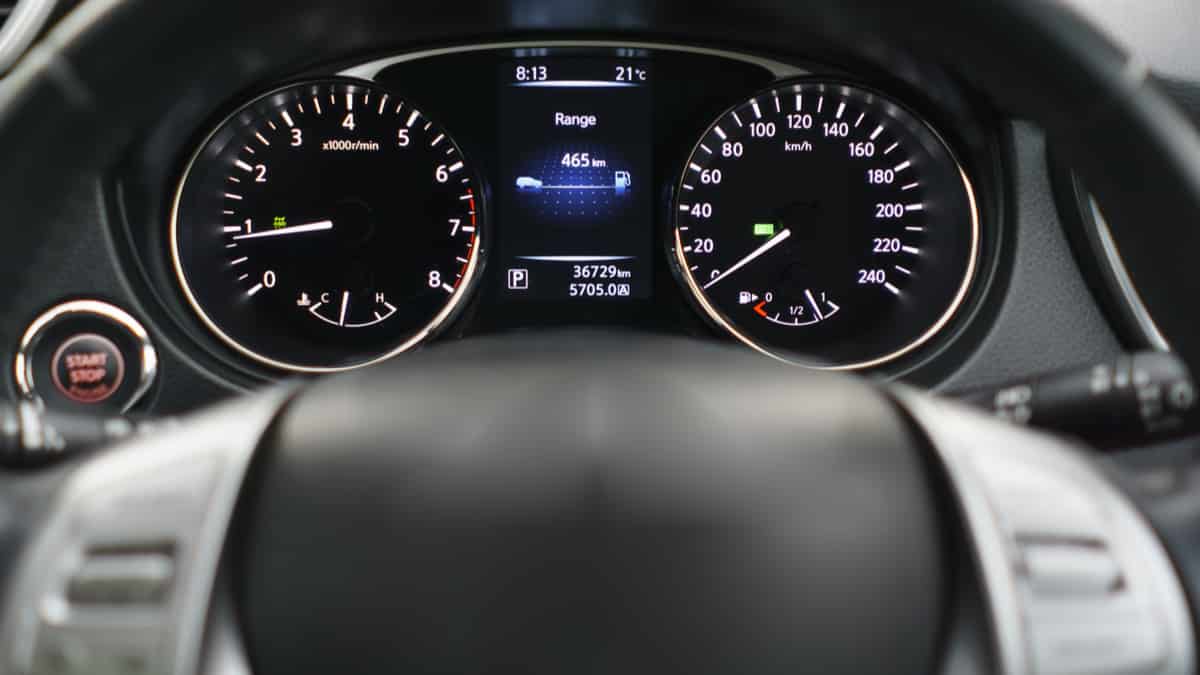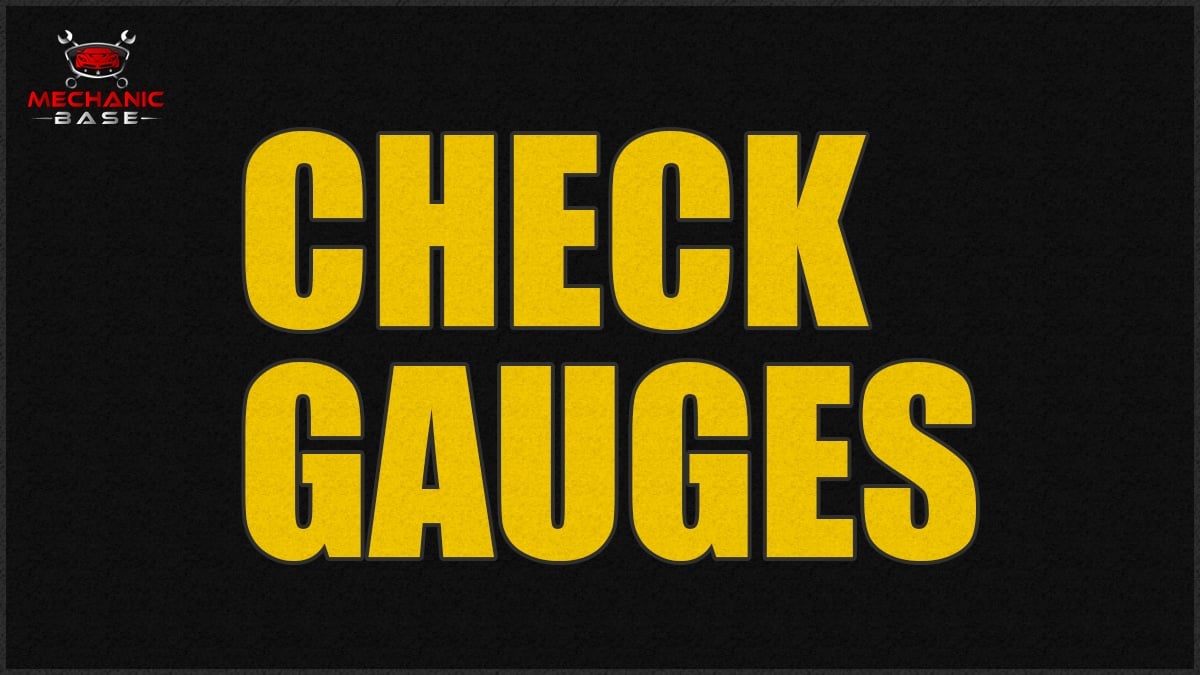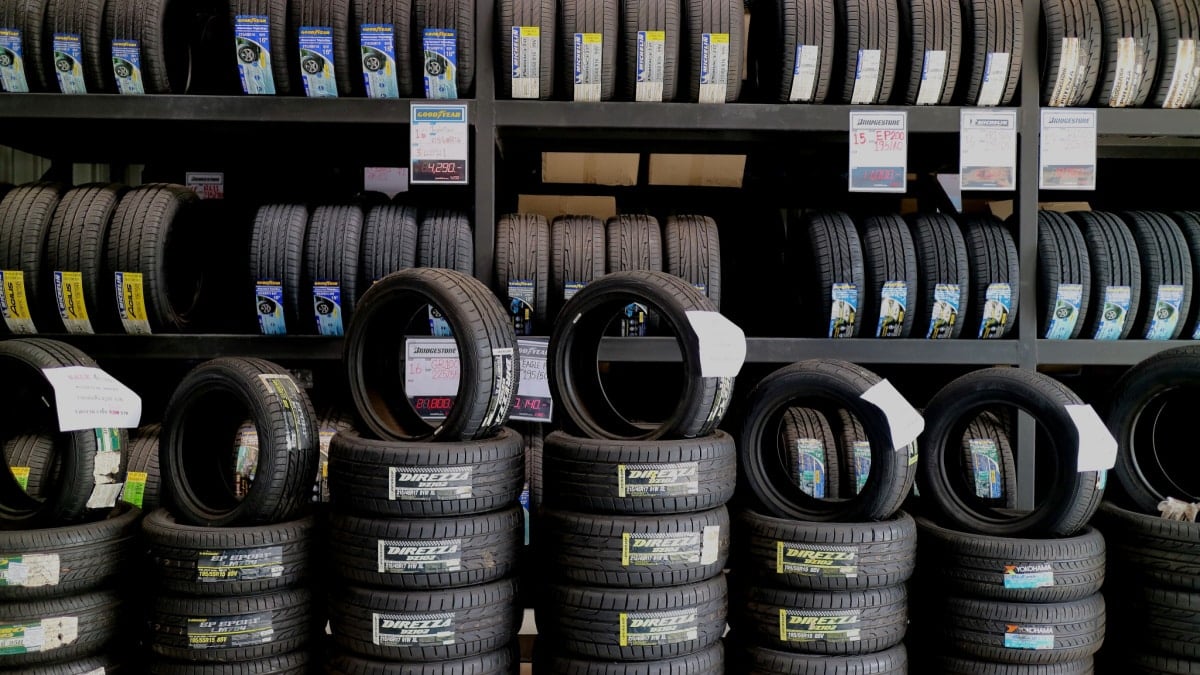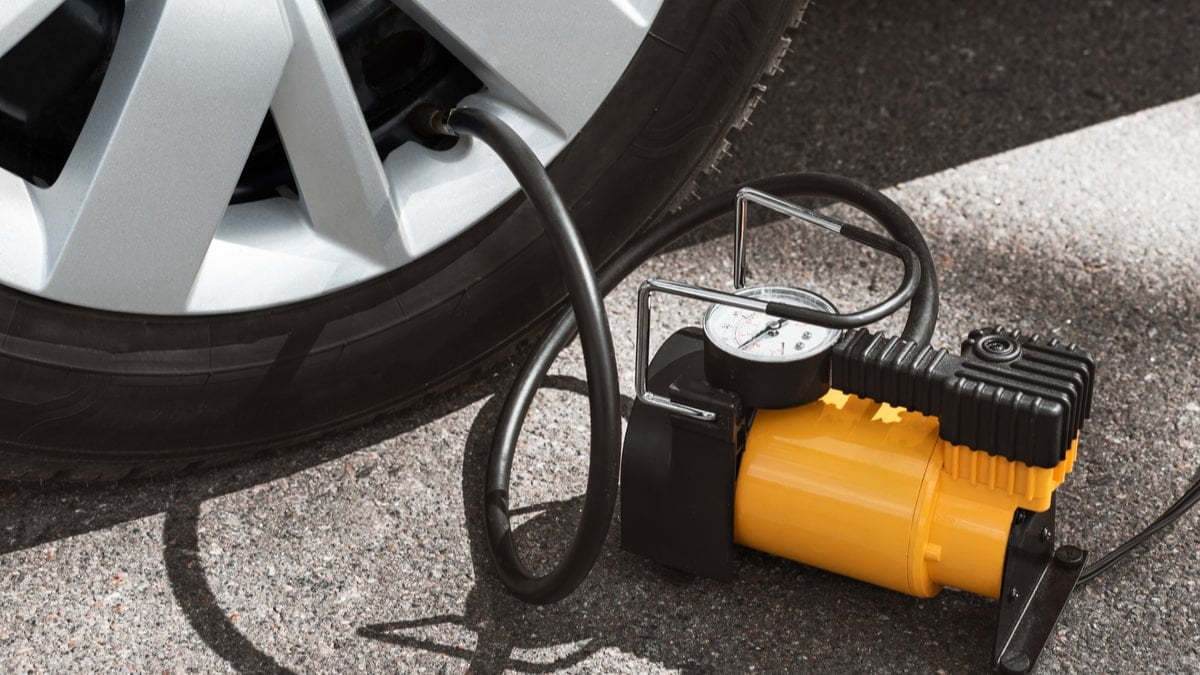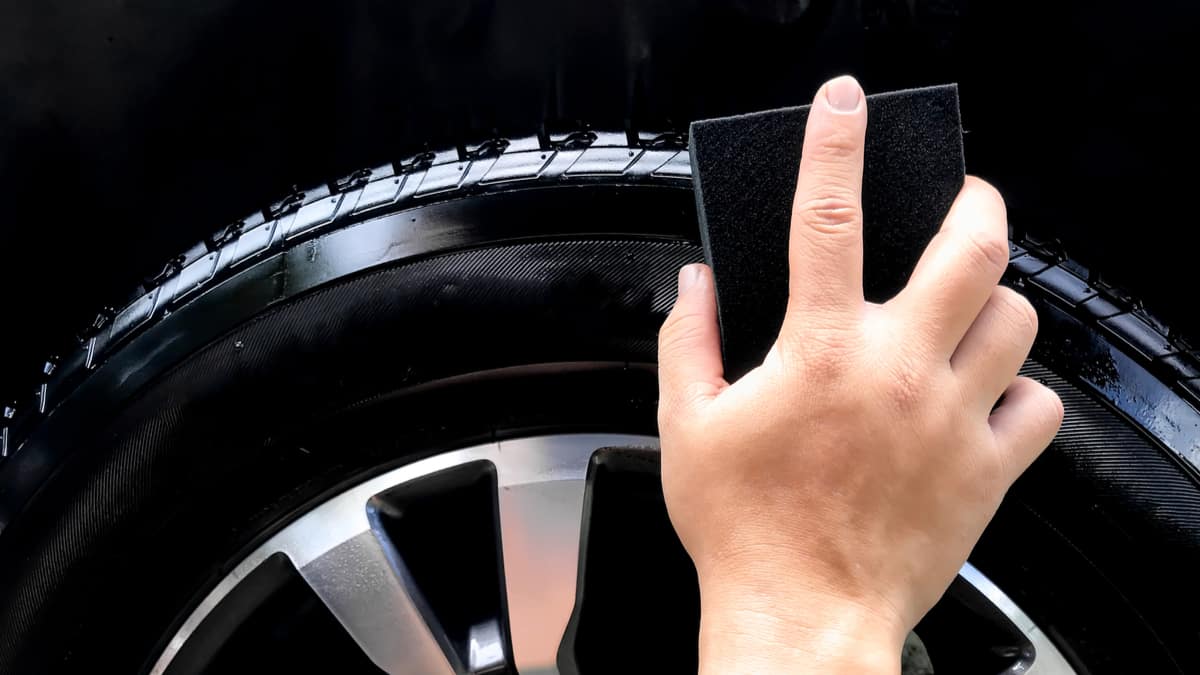When you’re rolling down the road, the last thing you’re often thinking about is your vehicle’s tire pressure. But the truth is that your vehicle’s tire pressure will fluctuate over time, and without a tire pressure gauge, that can lead to disastrous results.
But not every tire pressure gauge will give you the results you’re looking for. That’s why we tracked down and reviewed the ten best tire pressure gauges out there. Not only that, but we came up with a comprehensive buyer’s guide to walk you through everything you need to know before you purchase anything!
Top 10 Best Tire Pressure Gauges
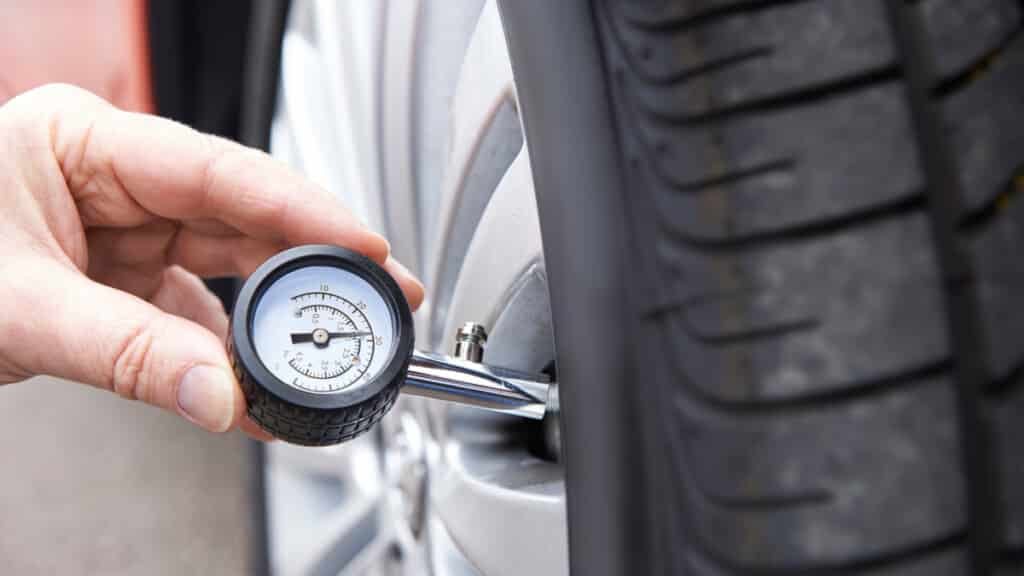
1. AstroAI Digital – Best Tire Pressure Gauge Overall
- PSI Range: 0 to 150
- Display Style: Digital
If you simply want the easiest tire pressure gauge for your vehicles at home, then you can’t go wrong with the AstroAI Digital Tire Pressure Gauge. AstroAI products show up over and over on our list, and it’s because they have some phenomenal tire pressure gauges.
And while they make a ton of great tire pressure gauges, out of all the ones they make, this is the best they have for your home garage!
This gauge goes up to an impressive 150 PSI, which means it can easily handle even the largest trucks you might drive home. But since it’s a digital gauge, it’s still easy to read at every level. Moreover, while it’s digital, it’s available for an extremely affordable price, and it has a backlit display.
So, whether you’re checking your tire pressure in the morning before the sun comes up or in the middle of the day, it’s easy to see and use. Finally, there are three color options to choose from. While that’s not a huge deal, it does give your tire pressure gauge a little extra flair if you want it!
However, keep in mind that this is only a PSI gauge. It’s all most people want in their tire pressure gauge, but if you’re looking for something to help you lower or raise the tire pressure, this gauge isn’t going to help you out.
Pros
- Affordably priced
- Easy to use and read
- Large PSI range
- Three color options to choose from
- Backlit display
Cons
- Only checks PSI
2. AstroAI Digital Tire Inflator with Pressure Gauge – Best for Professionals
- PSI Range: 0 to 250
- Display Style: Digital
While our top choice might be great for your home garage or to leave in your vehicle, if you’re working in an automotive shop then you’re going to need something a little heavier duty. And that’s where the AstroAI Digital Tire Inflator with Pressure Gauge comes in.
Not only can it check tire pressures up to 250 psi, but it also gives you the ability to inflate your tires on the spot if they’re running a little low! Moreover, it comes with all the necessary Shrader valve tools to work on your tires, and that can save you a few bucks and headaches there as well.
It uses a digital backlit display that makes it easy to see and read, and this saves your mechanics time when they’re airing up a truck. However, while these features are all great and they make it easier to use, keep in mind that to do any of this stuff you’ll need access to an airline with the right fittings.
They’re all over automotive shops, but it’s not something you’re likely to have in your home garage. Because of this, it’s better to save your money and go with a lower-end option unless you need an air pressure gauge and inflator in a professional setting.
Pros
- Checks PSI and acts as a tire inflator
- It comes with Shrader valve tools
- Very high PSI range
- Backlit display
Cons
- You need an airline to use it
3. AstroAI Pencil Tire Pressure Gauge – Best Budget
- PSI Range: 10 to 75
- Display Style: Analog
When you think of a tire pressure gauge, chances are that you’re thinking of something exactly like this AstroAI Pencil Tire Pressure Gauge. It’s the prototypical tire pressure gauge that shoots out when you hook it up to the tire. It’s an old-school design that’s stood the test of time because it works.
Moreover, it’s insanely affordable, and because of its smaller size, you can put them in the glove box of your vehicle for easy access when need it. Moreover, this classic design is extremely durable, so you won’t have to worry about replacing it anytime soon.
And since it comes with two tire pressure gauges (for less money than any other singular gauge), it gives you the option to put one in different cars or to put one back as a spare.
Still, we’d be lying if we said there are no perks associated with some of the more expensive tire pressure gauges. First, it’s not as easy to see, especially during dark conditions. There’s nothing to brighten the display, so you might need to use a flashlight to see what’s going on.
Second, it definitely has a lower PSI range compared to other tire pressure gauges. While it’s perfect for typical automotive applications, it can’t handle semi-trucks, some buses, and other large equipment. And on the other side of things, if you’re checking the tire pressure on something with a very low amount, it doesn’t start to register anything until at least 10 PSI.
So, while it might be the most affordable option out there, if you’re looking for a tire pressure gauge with more features, they’re certainly out there.
Pros
- Very affordable
- It comes in a two-pack
- Very small
- Easy to use
- Extremely durable
Cons
- Not as easy to see
- Lower PSI range
- Not backlit
4. EPAuto Digital Tire Pressure Gauge
- PSI Range: 0 to 150
- Display Style: Digital
The EPAuto Digital Tire Pressure Gauge is the first tire pressure gauge on our list that’s not an AstroAI product, but it’s still an outstanding choice. It uses a digital display that makes it easy to see your results, and it’s extremely easy to use.
But what really sets this tire pressure gauge apart is the price tag. For a digital tire pressure gauge, it’s incredibly affordable. It has a backlit display that makes it easy to see no matter the conditions, and there are two different color options you can choose from.
It’s a compact tire pressure gauge that can easily fit in your vehicle’s glove box or home garage. Just keep some spare batteries around so you’re never entirely out of luck. However, while it’s the most affordable digital tire pressure gauge on our list, it fell out of our top three for a reason.
And that reason is that it’s not the most durable tire pressure gauge out there. So, while you might be getting a good deal upfront, it’s not going to last nearly as long as our top choice.
Still, if you’re in a pinch and want a digital gauge, this one will get you through for quite some time.
Pros
- Backlit display
- Very affordable
- Two-color options to choose from
- Easy to use
Cons
- Not the most durable
5. JACO ElitePro Tire Pressure Gauge
- PSI Range: 0 to 60
- Display Style: Analog
While digital tire pressure gauges are all the rage, there’s definitely a solid case for sticking to an analog style. And if you want a phenomenal analog tire pressure gauge for your personal vehicle, you should consider the JACO ElitePro Tire Pressure Gauge.
It’s an ANSI-certified gauge, which means you can trust the results you’re getting. Furthermore, it’s incredibly durable, and it comes with a lifetime warranty! Another perk that it offers is that you can quickly release extra air pressure with the turn of a dial.
This means if you accidentally overfill your tires, you can fix the issue without pulling off the tire pressure gauge and going back and forth. And while it’s an analog tire pressure gauge, the actual dial will glow in the dark!
This means you don’t have a flashlight to read the results, and you can rest easy knowing exactly what tire pressure you’re at. However, it is slightly more expensive, and the maximum tire pressure tops out at 60 psi.
While that’s plenty for your personal vehicles, if you drive a bus, semi, or another large vehicle, you’ll need to upgrade to another tire pressure gauge.
Pros
- ANSI certified
- Very durable
- Allows you to release air pressure quickly
- Lifetime warranty
- Glows in the dark
Cons
- Lower maximum pressure
- Slightly more expensive
6. AstroAI Digital Tire Pressure Gauge Heavy Duty Dual Head
- PSI Range: 0 to 230
- Display Style: Digital
When you look at the AstroAI Digital Tire Pressure Gauge Heavy Duty Dual Head, it’s hard to find anything wrong with it besides the price. But while it’s certainly a more expensive option compared to other tire pressure gauges, it also has a few extra features that help justify the cost.
First, it uses a backlit display that it’s easy to see and read. Second, it has a smaller design that makes it easier to fit into tight spaces. Moreover, it allows you to store it in a glovebox easily or just about any drawer in your toolbox.
From there, the maximum 230 psi range means it can handle any vehicle and tire out there. Finally, while the backlit display allows you to easily see the results, the built-in flashlight gives you the capability to easily find the valve stem, even in the darkest conditions.
Still, while all these features are nice, they’re not something you need unless you work in an automotive shop. And since you can’t fill the tires with this gauge, it misses the mark a bit there too.
But if you’re looking for a digital tire pressure gauge that has the same style appearance as the old-school tire pressure gauge, this is as close as it gets!
Pros
- Backlit display
- Smaller design
- Very durable
- Includes a flashlight
- Very high maximum PSI
Cons
- Slightly more expensive
7. Vondior Tire Pressure Gauge
- PSI Range: 0 to 60
- Display Style: Analog
This Vondoir Tire Pressure Gauge is another analog style tire pressure gauge that can give you extremely accurate results. Even better, it’s an affordable option that uses an ANSI calibrated dial. It’s extremely compact, and it has a glow-in-the-dark dial that ensures you can always see what’s going on.
There are two color options for you to choose from, and since it’s smaller, you can easily find a space for it in your vehicle or toolbox. Just keep in mind that the maximum psi does top out at 60.
While that’s more than enough for a personal vehicle, if you’re working or driving larger vehicles you might need something a little heavier duty. Finally, if you are driving something a little larger, keep in mind that this compact design also means that it’s a bit harder to work into some wheel wells.
While it’s usually not a problem for passenger vehicles, if you do try something with a dual wheel axle, then you might not be able to reach the inner tire without hitting the rim or another part of the tire. So, it’s not perfect, but if it works for your vehicle, then it’s a more affordable analog tire pressure gauge.
Pros
- More affordable
- Two-color options
- Compact design
- Glow in the dark dial
- ANSI calibrated
Cons
- Lower maximum PSI
- Compact design makes it hard to fit into some wheel wells
8. TireTek Tire Pressure Gauge
- PSI Range: 0 to 60
- Display Style: Analog
Another company that makes top-notch tire pressure gauges is TireTek. This is another analog tire pressure gauge that gives phenomenal results. The dial is large and easy to see, and it even glows in the dark!
Moreover, it has an extremely compact design that makes it easy to store until you need it. However, it features the same design as the Vondior tire pressure gauge above, and that means it can be a challenge to use it on the inner tire of a vehicle with a dual axle.
From there, the 60-psi maximum is a bit on the lower end of things, but it’s still more than enough for most passenger vehicles. Unless you’re driving something like a bus or a semi, then it’ll easily get the job done for you.
And as another nice perk, this tire pressure gauge comes with an easy-to-use bleeder valve that you can actuate with the push of a button. So, if you’re checking your tire pressure and it’s too high, you can get it back in check without ever removing the tire pressure gauge!
Just ensure you’re not driving a dually and that your recommended tire pressure is well below 60 psi before purchasing this gauge!
Pros
- More affordable
- Glow in the dark
- Easy to use
- Compact design
- Included bleeder valve
Cons
- Lower maximum PSI
- Compact design makes it hard to fit into some wheel wells
9. JACO ElitePro Tire Pressure Gauge
- PSI Range: 0 to 100
- Display Style: Analog
This JACO ElitePro Tire Pressure Gauge is almost identical to the previous JACO ElitePro Tire Pressure Gauge that we reviewed earlier, except for one key distinction. This one has a psi range that reaches 100 psi, while the other one only reaches 60 psi.
But while that might make it seem like this one belongs farther up the list, unless you need the extra psi coverage, you’re spending more for this one. And since 100 psi still won’t cover every vehicle out there, you’re really spending more without getting a far more versatile product.
Still, with this tire pressure gauge you’re getting a large display with a glow-in-the-dark dial, and it’s insanely durable. In fact, it comes with a lifetime warranty, so you don’t ever have to worry about replacing it!
Finally, it has an easy-to-use bleeder valve that lets you lower the air pressure in your tire and keep tabs on everything at the same time. No more removing and reattaching the tire pressure gauge to ensure that you’re not letting too much air out!
So, while this tire pressure gauge is near the bottom of our list, it’s still an extremely high-quality product that covers anything you could need out of a tire pressure gauge for a passenger vehicle.
Pros
- Glow in the dark dial
- Easy to use bleeder valve
- Very durable
- Lifetime warranty
- Slightly higher maximum PSI
Cons
- Slightly more expensive
10. Vendor Tire Gauge
- PSI Range: 0 to 100
- Display Style: Analog
Rounding out our list is the Vondior Tire Gauge. While it might be the last option on our list, that doesn’t mean it’s not worth checking out. It’s another analog tire pressure gauge that delivers insanely accurate results, and as such, it’s worth every penny.
But it’s more than just another tire pressure gauge. It uses a longer hose at the end of the analog gauge that makes it easier to hook up, and the dial glows in the dark for easy visibility. Like all the analog tire pressure gauges, it doesn’t require batteries, and this ensures you’re never scrambling at the last minute to get your equipment to work.
Additionally, there are two different tire pressure gauge colors to choose from. While this might not seem like a big deal, it does give you the opportunity to add a little flair to your tire pressure gauge.
Still, what really drove it to the bottom of our list had nothing to do with its performance and everything to do with its price. It’s not insanely expensive, but with all these tire pressures gauges offering similar features and longevity, there’s no reason to spend a little more for this one.
You can get everything it offers on a product farther up the list, and you don’t need to spend the extra money for it.
Pros
- Two-color options to choose from
- Longer hose for easy connection
- Glow in the dark dial
- No batteries required
Cons
- Slightly more expensive
Buyer’s Guide
If you’re still a little confused about which tire pressure gauge is right for you after reading the reviews, or even if you need one, we’ll break down everything you need to know here. Spoiler alert – you need a tire pressure gauge.
Do You Need a Tire Pressure Gauge if Your Vehicle Has TPMS?
Yes! While a vehicle with TPMS gives you a little extra peace of mind, the system isn’t foolproof. All it takes is one faulty sensor and you can end up driving around with tires at the wrong pressure without even realizing it.
Moreover, unless your vehicle tells you the specific tire pressure for each tire, TPMS only kicks on once the pressure is off by a certain amount. While you likely won’t have to deal with blowouts without, these differences can lead to premature tire wear and less fuel efficiency.
Don’t rely on the sensors, check it yourself to be sure.
RELATED: Tire Pressure Sensor Fault (What It Means & How to Fix It)
Selecting a PSI Range for Your Tire Pressure Gauge
You might find yourself thinking that as long as the tire pressure gauge has a high enough psi rating for your tire, it doesn’t matter how high it goes. But while that’s technically true, there are two potential problems you can encounter if your tire pressure gauge goes too high.
First, tire pressure gauges that go to higher psi readings simply cost more. They need to handle more pressure, and the manufacturer has to spend more money sealing everything up to handle the extra pressure.
Second, if you’re using an analog tire pressure gauge, it can be more challenging to get a precise reading if the numbers go too high. While you can certainly do it, it’s going to require a bit more work.
Still, having a tire pressure gauge that goes too high is definitely better than having one that doesn’t go high enough. That’s because if you hook up a tire pressure gauge to too much pressure you can very easily break it.
And since you don’t always get the perfect tire pressure amount the first time, you need to have a buffer zone built-in from your tires and the tire pressure gauge’s maximum reading. We recommend at least ten psi extra for your gauge!
Analog vs Digital
There’s some debate out there between analog and digital gauges, but the truth is that it all comes down to the gauge you’re purchasing. At and that price point we’re highlighting in this review, analog tire pressure gauges are simply more accurate.
Don’t misunderstand us, digital gauges provide plenty of accuracy to the level you need for everyday performance, but if you’re looking for the best possible results by fine-tuning your tire pressure, the analog gauges will give you a smidge more accuracy.
However, the tradeoff is the ease of use. While the analog gauges are a little more accurate, the digital gauges are easier to see and use. And since they get the job done to a level where the vast majority of drivers will never notice the difference, that’s why they’re among our top choices here.
But keep in mind that digital tire pressure gauges use batteries, and while they last a long time, it’s still a good idea to keep some extra batteries around in case you need them!
How Often Should You Check Your Tire Pressure?
While some mechanics will tell you that you should check your tire pressure every week, the truth is that once a month is usually more than enough. The only caveat to this is that when the weather starts to cool down, you need to recheck your tire pressure.
This is true even if the cold spell only lasts a night! That’s because as the weather cools, your tire pressure will drop, and you’ll need to fill them back up to get to the right levels.
Finding the Correct Tire Pressure
Having a tire pressure gauge is great and all, but if you don’t know what tire pressure your tires are supposed to be at it, it doesn’t do you a lick of good. The good news is that finding the correct tire pressure is pretty easy.
Usually, the easiest way to check the correct tire pressure for your vehicle is to look in the door jamb. There you’ll find a sticker that tells you the manufacturer’s recommended tire size and pressures.
However, over time this sticker can wear down, and it can be hard to read. That’s why another area you can check is the owner’s manual. However, if you’re checking the owner’s manual you need to double-check that you’re looking at the correct model and trim package to get the correct results.
However, if the sticker is worn down and you don’t have the owner’s manual, another option you have is Google and the manufacturer’s website. We recommend tracking down a copy of the owner’s manual online instead of simply trusting the first result you see.
Because if you’re getting it from a copy of the owner’s manual, you’re guaranteed to get the correct results!
RELATED: How to Find the Correct Tire Pressure For Your Car
Too Much Air Pressure vs Too Little Air Pressure
While some people still like to argue that you should either use more air pressure or less air pressure than the manufacturer’s recommended levels for one reason or another, the truth is that both are wrong, and we’ll break down why.
Too High Air Pressure
If you overinflate your tire, there are a few things that can go wrong. First, you’re going to notice that your tires are wearing faster on the middle of the tire than on the edges. This means two things. First, your tires will wear out faster. Second, you’re not getting the best possible traction.
Your tires work best when as much of it is on the ground as possible, and by overinflating them, you’re reducing traction. Furthermore, if you overinflate the tire too far, you exceed the maximum pressure for the tire, which can lead to a blowout on the side of the road.
So, while some will argue that overinflating tires improves your vehicle’s fuel efficiency, it’s not worth the loss of performance and potential safety hazard you’re creating.
Too Low Air Pressure
If lower air pressure means more tire ends up on the ground, won’t you get better traction if you lower the air pressure? The short answer is yes, but that doesn’t mean you should do it.
The first reason is that your tires will wear prematurely. But while premature tire wear will cost you some extra money, the real concern is that an underinflated tire increases the chances of you unseating the bead.
If this happens while you’re driving down the road, it’s equivalent to a blowout, which can be extremely dangerous. Moreover, it will ruin the tire, and it can cause additional damage to your vehicle.
The only exception to this rule is if you’re off-roading and if you have specific tires for off-roading. These tires have used a technology that helps keep the bead in place at the lower air pressure, but only if you’re traveling at slower speeds.
There are tons of tire pressure gauges out there but finding the right one is the only way to ensure that your tires are right where they’re supposed to be. And because ambient temperatures can change tire pressure, it’s something you need to stay on top of to ensure that you’re not accidentally creating a hazardous condition when you get on the road.
And if you’re still a little unsure about which tire pressure gauge is right for you after reading all the reviews and the buyer’s guide, why not go with the AstroAI Digital Tire Pressure Gauge? It’s our top choice for a reason – easy to use and gives accurate results.But if you’re looking to save a few bucks or purchase them for multiple vehicles, then the AstroAI Pencil Tire Pressure Gauge is an old-school style tire pressure gauge that can certainly get the job done – and you don’t have to spend a ton of cash to get it!
Categories: Maintenance, Reviews, Tires
